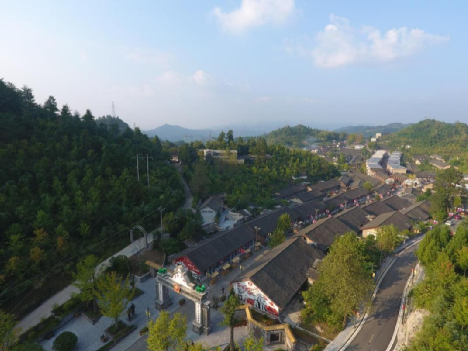New achievements in archaeometallurgy published in Industrial Archaeology Review
Professor LI Yingfu's team at the Center for Archaeological Science, Sichuan University, during the implementation of the major project of the National Social Science Fund, "Investigation and Research on Metallurgical Sites in the Pre-Qin and Han Dynasties in Southwest China," collaborated with the Guizhou Provincial Institute of Archaeology to conduct a special investigation and trial excavation of the Wanshan Mercury Mine Site. Related achievements were published in the June 2015 issue of Jianghan Archaeology. To cooperate with the application for the World Cultural Heritage status of the Wanshan Mercury Mine Industrial Site, the research team further conducted research on the protection and utilization of the Wanshan Mercury Mine industrial heritage. The latest achievement, "Archaeological Investigation and Industrial Heritage Study of the Wanshan Mercury Mining Site in Guizhou Province, China," was published in the Industrial Archaeology Review magazine. Professor LI Yingfu is the first author of the paper, doctoral students MA Chunyan, LIU Fang, and HUANG Wan are co-authors, and Associate Professor LI Yuniu is the corresponding author. Industrial Archaeology Review is the journal of the Association for Industrial Archaeology in the UK. As an influential authoritative journal of industrial archaeology in the archaeological discipline, its papers are included in A&HCI.
The Wanshan Mercury Mine Site is an important resource for studying ancient Chinese metal mining and the history of science and technology. It is also one of the few industrial heritage sites with the most historical and archaeological value in China and was included in the World Cultural Heritage Tentative List in 2012. The site is located in Wanshan Town, Wanshan District, Tongren City, Guizhou Province, and was once one of the most important cinnabar and mercury mines in the world, second only in scale to the mines in Spain and Italy, and is known as the "Kingdom of Cinnabar." The surface distribution area of the site reaches 2.5 square kilometers, and the mining area is about 32,000 square meters, including multiple locations such as Xianrendong, Heidongzi, and Yunnan Ti. Ancient stone ladders, tunnels, grooves, markings, pillars, roadways, smelting furnaces, and other mining and mercury refining remains and relics are preserved in the mine. The site also houses the former site of the Xiangqian Mercury Mining Company and modern mining, ore dressing, and smelting factory sites, as well as buildings such as living facilities. Due to the depletion of mineral resources, cinnabar mining and mercury smelting ceased production at the beginning of this century.
A total of 36 cinnabar mining and production-related sites have been discovered at the Wanshan Mercury Mine Site, including ancient mining, settlements, roads, and bridge wharves, as well as modern residential buildings and city walls, and modern industrial heritage building complexes, dating from the Tang and Song dynasties to modern times. The Wanshan Mercury Mine Site is an important case of industrial heritage protection and utilization in China. Around the protection and utilization plan of cinnabar mining and mercury smelting sites, the reinforcement and protection of the mine itself and the utilization of some underground mine tunnels, as well as tourist facilities such as glass plank roads built along the mountain, have been implemented, forming a unique mining site park landscape. The Wanshan Mercury Mine Site takes the mining and production remains as the center, displaying the thousand-year history of cinnabar mining and the mining culture. Wanshan, as a resource-exhausted transformation city, its protection and utilization model of mercury mining industrial cultural heritage is an important exploration for the transformation and development of many resource-exhausted cities in China, and has global significance (Figure).
The investigation and industrial heritage research on the Wanshan cinnabar and mercury mining site carried out by the team fills the gap in the archaeological research of Chinese cinnabar and mercury handicraft industry. The publication of this English achievement also helps the world understand the current situation, basic theories and methods of industrial heritage protection and utilization in China.

Industrial heritage exhibition area transformed from the old mercury mine production plant
